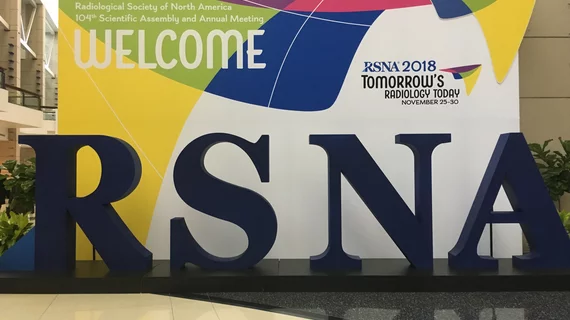RSNA 2018: Radiologists must use AI to create their future
Over the past year, 2018 RSNA President Vijay Rao, MD, has heard radiologists across the globe express their “hype, hope and fear” of the sudden rise in technologies such as artificial intelligence (AI). During her presidential address at RSNA 2018, she put those fears to bed, while placing the onus on radiologists to help do the same.
“I believe, more firmly than ever, that AI has the potential to enhance our profession and transform the practice of radiology worldwide,” Rao said. To fully realize that potential, she argued radiologists need to embrace AI and focus on two key initiatives.
Recreate and rebrand reading rooms
The reading room has become synonymous with radiologist isolation. With the help of AI, radiologists have the opportunity to turn the cave into a “diagnostic data hub,” Rao said. This “rebranding,” as she called it, could be the foundation for advancing personalized medicine.
Clinical teams once gathered in reading rooms to confer with radiologists, but with the rise of PACS and the digitization of imaging, clinicians no longer need to visit the reading room to view imaging findings. In data hubs, clinical teams could gather or videoconference together to make patient management decisions as a team, argued Rao, instead of a radiologist isolated in their reading room.
Electronic medical records (EMRs), imaging and lab data could flow into the data hub and AI could aggregate imaging findings with images from other modalities, surgical findings, patient history information, demographic information and even genomics. A central repository with millions of similar patient records could compare and match data to predict more effective patient management options.
“Creating this type of data hub could lead to a diagnosis that might otherwise be missed if one just considered the current imaging exam in isolation,” she said.
Taking over total imaging care
Currently, many radiology specialties rely too heavily on referring clinicians, Rao said. Radiologists must rethink their role and embrace new technologies to reclaim a more integral role in patient imaging.
“We need to act like clinicians, rather than just image readers,” she said. “The good news is AI and related technologies give us exactly the tools we need to finally make this vision a reality.
Rethinking radiology’s future in the year 2043, Rao imagined a daily routine in which algorithms have scanned patient EMRs for all important clinical information and determined which modality is needed. Thanks to AI, all scans take about 10 minutes and CT imaging is completed with minimal radiation dosage. Those scans are then inspected for critical findings and automatically put to the top of the worklist.
“AI’s most important impact on radiology will be to enable us to work more efficiently and effectively, this will in turn mean we will have more time for so-called non-interpretive activities—the kind of things that will enhance our value and visibility to patients”

